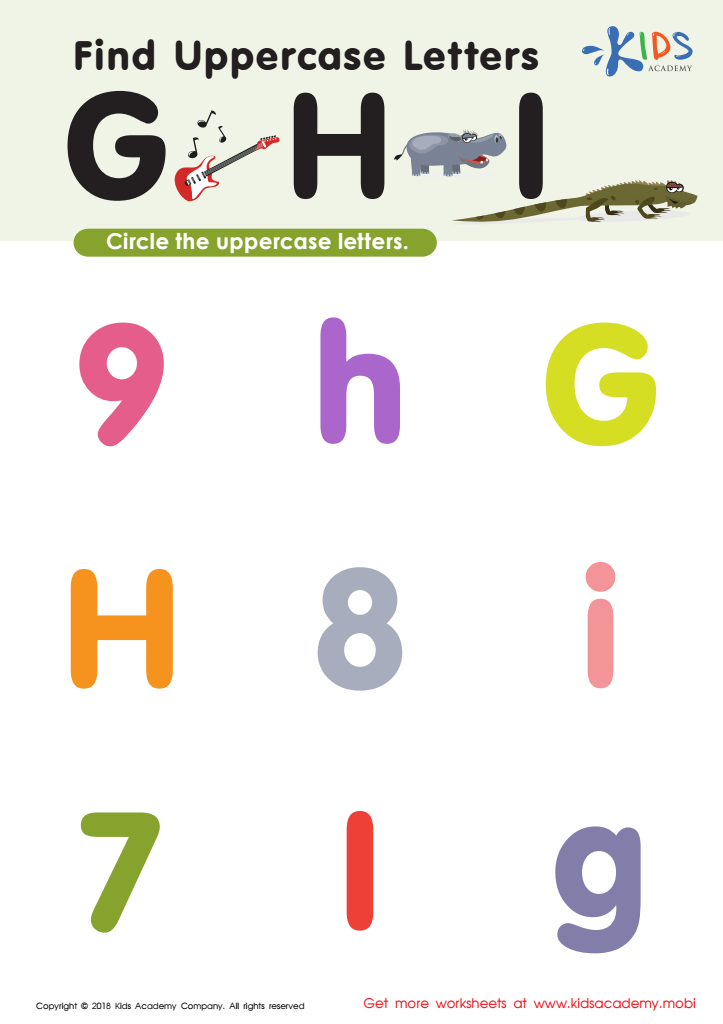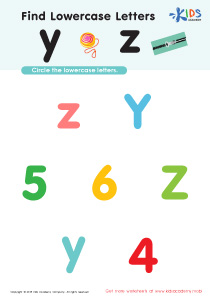Alphabet familiarity Normal Uppercase Letters Worksheets for Ages 6-8
4 filtered results
-
From - To
Boost your child's alphabet familiarity with our engaging Normal Uppercase Letters Worksheets designed specifically for ages 6-8. These worksheets provide a fun and interactive way for young learners to recognize and practice uppercase letters. Through a variety of activities, including tracing, matching, and labeling, kids will enhance their letter identification skills while developing fine motor abilities. Our thoughtfully crafted exercises cater to different learning styles, ensuring that every child can thrive. Perfect for at-home learning or classroom use, these worksheets support your child's early literacy journey, making learning the alphabet enjoyable and effective. Start building a strong foundation today!


Find Uppercase Letters G, H, and I Worksheet


Find Uppercase Letters Worksheet


Find Uppercase Letters J, K, and L Worksheet


Find Uppercase Letters A, B, and C Worksheet
Alphabet familiarity, particularly with uppercase letters, is crucial for children aged 6-8 as they lay a foundational skill for reading and writing. At this age, students transition from learning to read to reading to learn. Mastery of uppercase letters enhances their ability to recognize the beginning of sentences and proper nouns, aiding comprehension and literacy development.
Understanding uppercase letters also supports classroom instruction and daily communication. When children can confidently identify and write capital letters, they develop clearer handwriting skills, making their work more legible to teachers and peers. This skill is often intertwined with a child’s self-esteem; children who struggle with letter recognition may feel frustrated or disengaged in academic settings.
Moreover, uppercase letters are frequently utilized in titles, signs, and classroom displays, emphasizing their relevance beyond the written page. Parents and teachers play a vital role in promoting alphabet familiarity through engaging activities such as letter games, reading together, or incorporating writing exercises. By prioritizing uppercase letter recognition, adults can foster a positive literacy experience, setting children on a path toward academic success and a lifelong love for learning. Recognizing the significance of this milestone helps ensure that children are adequately prepared for the complexities of language as they progress.
 Assign to My Students
Assign to My Students















